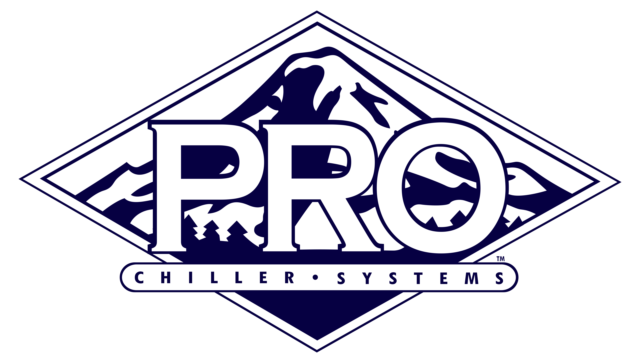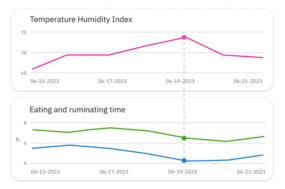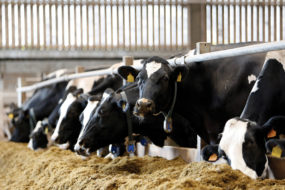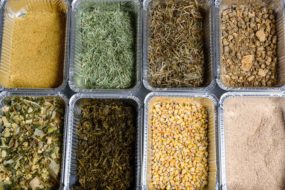Dairy producers have long searched for advantages to make their work more efficient and productive. Nearly 150 years ago, in 1879, New Jersey dairy farmer Anna Baldwin invented the first milking machine – and for those who enjoyed hand-milking in a stable by lantern light, their days were numbered.
Fast-forward to 1992, a prototype of the first-ever, self-contained single-box milking robot debuted to fanfare in the Netherlands. This instantly revolutionized the dairy industry and garnered recognition as one of the most significant advancements in the dairy industry. Just three years later, the milking robot became commercially available, with competitors creating and selling their own versions of the technology.
Today, dairy producers have had access to safe, efficient automated dairy systems for 30 years, and the pace of advancement and innovation is increasing rapidly. Producers who were early adopters of dairy robotics and had limited choices at the time are now presented with a selection of automated systems and options. This wide variety of new and improved equipment fundamentally changes how to evaluate next steps when transitioning to robotic milking for the first time or upgrading from previous-generation systems.
What’s changed?
Worldwide adoption rates for automated dairy systems have grown steadily since their inception. In 2000, there were only about 800 milking robots on farms. Today, there are approximately 100,000 milking robots worldwide. Driving this massive increase are several factors, not all of which are related to robots themselves. Note, these numbers do not include rotaries or parlors with automated attaching devices. Those systems leave little room for full efficiency gains.
Availability, technology, support – As the number of companies manufacturing automated dairy systems grew, so did the availability of automated milking systems. In North America alone, there are currently over 500 equipment dealers offering robotic milking technology to their customers. Along the way, the technology utilized in these robots has expanded. By utilizing new materials (such as carbon fiber as a lightweight replacement for heavier components) and optimizing performance through the advent of dairy data generated by automated milking systems, modern milking robots use fewer resources, are more efficient and more reliable.
Data – Arguably the biggest change in automated milking systems is the amount of data that allows producers to optimize performance, both of robots and cows. In 1995, a producer would have limited access to data, which would be reviewed on a large desktop computer. A modern milking robot generates well over 150 data points at every milking, aggregating the data and trends to create action items for the herd manager. These attention lists are then delivered to applications on a desktop, laptop, phone or tablet. A switch to robotic milking means a switch from your dairy running you to you managing it, using data to continuously optimize performance.
The dairy market and paths to financial viability – The dairy market has become increasingly volatile over the years, with significant price fluctuation, ever-changing legislation and consolidation of smaller dairies into larger operations. This puts producers in a situation where every opportunity for efficiency and reduced labor must be acted on to maximize milk output. The efficiency gains offered by automated milking systems help farmers to remain viable and profitable in an uncertain future. Additionally, as automated milking systems continue to prove their worth over the years, banks and lending institutions have become more familiar with the technology and now regularly provide capital for these operations.
The efficiency equation
Efficiency on a dairy operation can be calculated through humans and animals. On the human side, tasks in an automated milking system must include firm standard operating procedures (SOPs) which maximize well-being and comfort for the cow. In other words, those SOPs must minimize human-to-cow interactions. We know cows like the same routine 24 hours a day, seven days a week, 365 days a year. Here’s some food for thought: Do we really want to leave the single most important task on a dairy, harvesting milk, in human hands?
Let’s focus on the cow side of efficiency. There are dozens of scientific research papers that point to the benefits of proper milking frequency in the early part of lactation, in terms of increased milk production and mammary cell proliferation. Automated milking systems are specifically designed to provide the opportunity for the dairy cow to find her individual rhythm for a milking, feedbunk, water trough or freestall visit – the absolute gold standard in efficiency.
What’s been neglected is the opportunity to feed a cow in a milking robot based on her individual need. Imagine the cow whose weight is recorded at every robot visit and a nutrient is fed at the robot based on her weight, production and feed efficiency calculations.
Artificial intelligence (AI) will play a pivotal role in the efficiency equation as well. The information that is collected will play a larger role in the decision-making process. This means software will learn how a user interprets data and create not just an attention list, but an action list.
A not-so-new technology
Whether upgrading from previous-generation equipment or making a switch to automated milking for the first time, investment in new systems warrants careful consideration, due diligence and firsthand research. One of the best ways is to visit dairy producers who have invested in milking robots.
The partnership with an equipment dealer and their farm management support team will also play a critical role in the transition to robotic milking and the ongoing success of your operation. Equipment dealers can offer service packages that range from basic preventative maintenance all the way to constant systems monitoring and continuous improvement plans.
What should users expect in today’s robot market?
The automated milking system market has matured considerably over the past three decades. From an expanded selection of manufacturers to increased service and support offerings, dairy producers have more options than ever before. Efficiency and reliability of these systems have increased while the financial barriers have decreased, offering producers a unique path to remaining viable in today’s market. Anna Baldwin would be proud of how far we’ve come.










